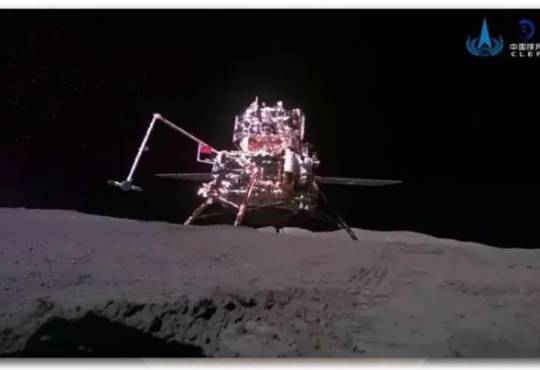
The US space agency NASA has announced that it will take ownership of the specialized deorbiting spacecraft designed to safely guide the International Space Station (ISS) into Earth’s atmosphere, marking the end of the station’s operational life in 2030.
SpaceX’s spacecraft will take the $150 billion ISS out of orbit to safety and burn it up in the atmosphere at 1,649°C.

During the mission, the spacecraft will be operated by NASA, providing a controlled descent and burnup of both the vehicle and the ISS before they reach the Earth’s surface.
Any remaining debris is expected to land in a designated area of the South Pacific Ocean, an area routinely used for deorbiting spacecraft.
The responsibility for the safe decommissioning of the ISS rests with the five space agencies that currently operate it: NASA, the Russian space corporation Roscosmos, the European Space Agency (ESA), the Japan Aerospace Exploration Agency (JAXA), and the Canadian Space Agency (CSA).
A symbol of cooperation and progress
The ISS, which is a cornerstone of international cooperation and scientific progress, will complete its 30-year mission with a coordinated effort. The financial commitment to the ISS program is significant, with NASA currently committing more than $3 billion annually.
That includes $1.3 billion for station operations and nearly $1.8 billion for crew and cargo. According to NASA’s transition report, those funds could be redirected to support deep space exploration initiatives, increasing the agency’s ability to undertake more ambitious missions.
Designing a deorbital vehicle is a challenging task assigned to SpaceX engineers. The ISS, which weighs 419,725 kg and orbits the Earth every 90 minutes at a speed of 29,000 km/h, presents significant technical obstacles.
Since its inception in November 1998, the ISS has been a testament to human ingenuity and international cooperation. The station has hosted astronauts from 23 countries and has been continuously inhabited since November 2000, starting with astronauts Sergej Krikaliev, Yuri Gizenko and William Shepherd.
Humanity’s reach is expanding
Technological advances have transformed space exploration since the launch of the ISS, but the legacy of being the first of its kind remains intact. Despite Earth’s geopolitical tensions, the ISS has remained a symbol of unity and scientific endeavor.
In 2020, NASA awarded a $140 million (€130 million) contract to Axiom Space to attach at least one commercial module to the ISS. Axiom plans to connect its first module by 2026, followed by additional modules each year. These modules will eventually form an independent commercial space station after the ISS is decommissioned.
Extending humanity’s reach into space, NASA is also developing the Lunar Gateway, a smaller station at the Lagrange point of the Earth-Moon system. It will serve as a waypoint for lunar missions. In addition, NASA has contracts with Blue Origin, Nanoracks LLC and Northrop Grumman Systems Corporation to create other space modules for free flight.
As the ISS approaches its final years, its legacy of international collaboration and scientific achievement continues to inspire future space exploration.








